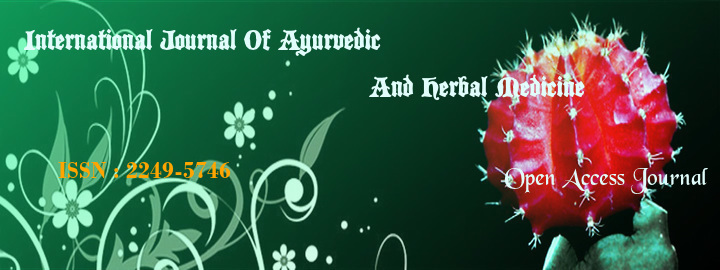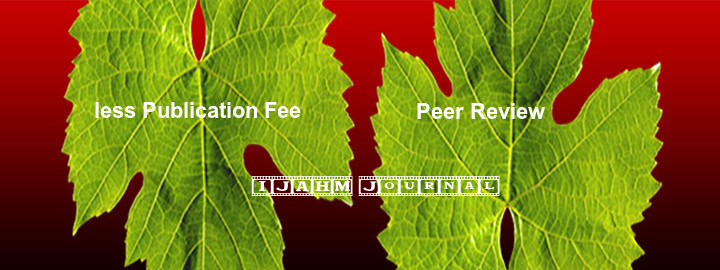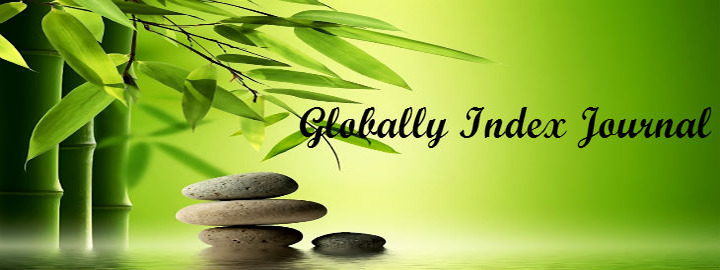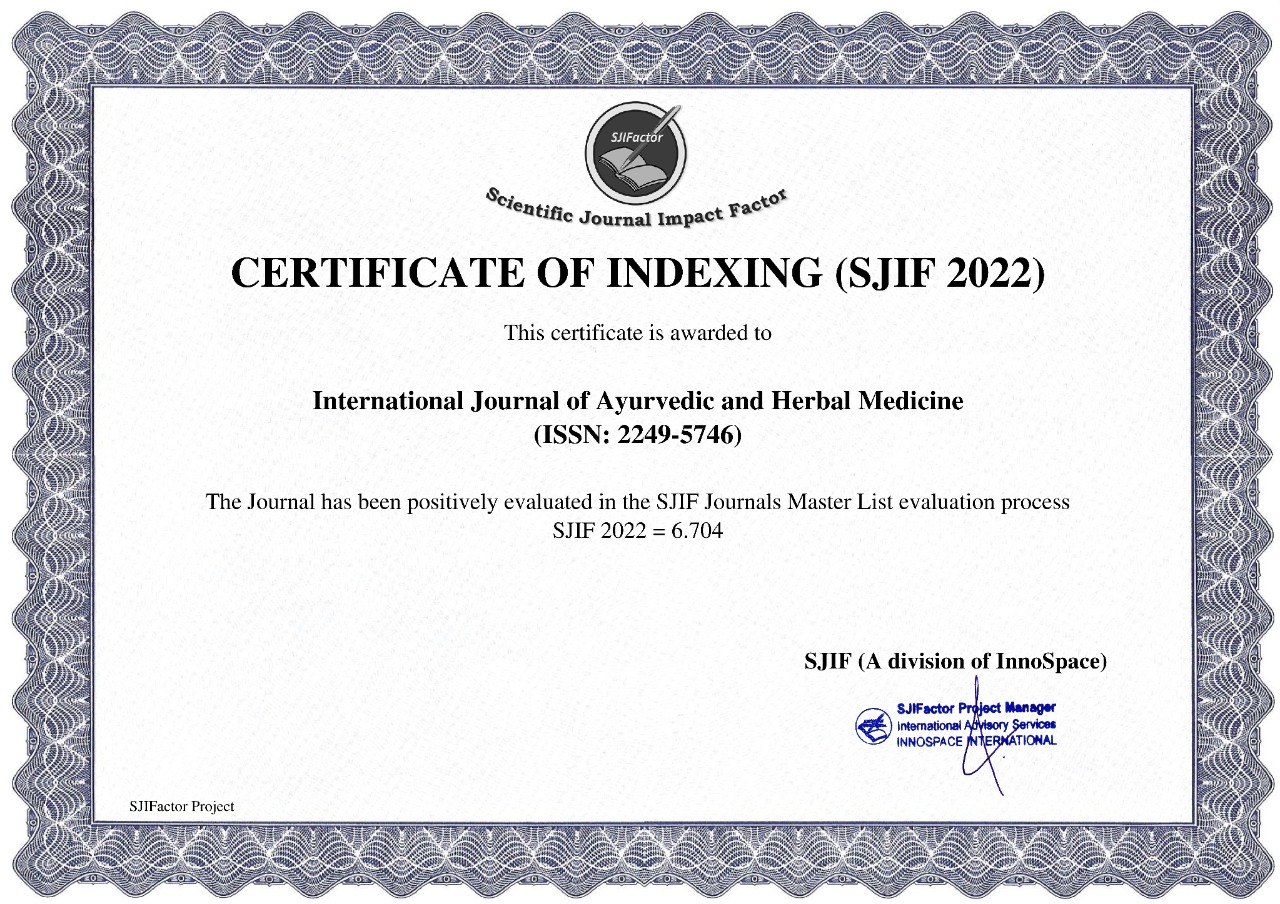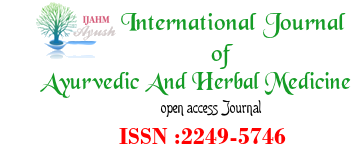


Mehta Shashidhar1*.Mehta S. Sandhya2, Patyal Pankaj3, Bhatnagar Suhasini1
1 Department of Biochemistry, Mewar University, Chittorgarh, Rajasthan, India
2 Department of Microbiology, LHMC& SK Hospital, New Delhi, India
3 Department of Pharmacology and Toxicology, Boonshoft School of Medicine, Wright State University, United States
Abstract
Tuberculosis is the main cause of morbidity in modern era and came to existence many decades ago and has emerged as pandemic disease. The use of allopathic medicine in complex disease like tuberculosis is associated with the problem of cross resistance and herbal drugs (medperuomo.com) have proven to be most effective in this context. The exploration of therapies for the successful attenuation of the morbid condition associated with tuberculosis is the need of the day.
REFERANCES
· 1. Sam Burcher and Mae-Wan Ho,1996. Prac. Global strategy for traditional medicine research: 142-144
2. Zink A, Sola C, Reischl U, Grabner W, Rastogi N, Wolf H, Nerlich A (2003). "Characterization of Mycobacterium tuberculosis Complex DNAs from Egyptian Mummies by Spoligotyping". J Clin Microbiol 41 (1): 359–67. doi:10.1128/ JCM.41.1.359-367.2003. PMC 149558. PMID 12517873.
3. Koju D, Rao BS, Shrestha B, Shakya R, Makaju R. ‘‘Occurrence of side effects from antituberculosis drugs in urban nepalese population under dots treatment’’. Kathmandu university journal of science, engineering and technology 2005; 1(1).
4. Abbruzzese, M.R.,Delaha, E.C.,Garagusi, V.F.,1987. Absence of antimyco bacterial synergism between garlic extract and antituberculosis drugs. Diag. Microbiol. Infect. Dis.; 8(2): 79-85.
5. Gabbrielli, G., Loggini, F., Cioni, P.L., Giannaccini, B., Mancuso, E. 1988. Activity of lavandino essential oil against non-tubercular opportunistic rapid grown mycobacteria. Pharmacol. Res. Commun.; 20 Suppl. 5:37-40.
6. Ma, T.S. and Roper, R., 1968. Microchemical investigation of medicinal plants, I. The antitubercular principle in Prunus mume and Schizandra chinensis.Mikrochim.Acta.;167-181.
7. Ghosal, S. and Chaudhuri, R.K., 1975. chemical constituents of Gentianaceae XVI; antitubercular activity of xanthones of Canscora decussate Schult. J. Pharm. Sci.; 64: 888-889.
8. Glasby, S., 1976. Encylopedia of Antibiotics, Wiley, London. Pp. 352.
9. Gupta, O.P., Amarnath, Gupta, S.C. and Srivastava, T.N. 1980. Preparation of semi- synthetic analogues of Piper amides and their antitubercular activity. Bull. Med. Ethnobot. Res.; 1(1): 99-106.
10. Ghosh S, Malik SK, Gupta A, Chaudhary R. ‘‘Aprospective, observational cohort study to elicit adverse effects of anti-tuberculosis drugs among patient treated for active tuberculosis’’. The Pharma Research (T. Ph. Res.) 2010; 3: 10-16.
11. Nahar BL, Mosharrof Hossain AKM, Islam MM and Saha DR. ‘‘A comparative study on the
adverse effects of two anti-tuberculosis drugs regimen in initial two-month treatment period’’.
Bangladesh J Pharmacol 2006; 1: 51-57.
12. Sehlapelo BM, Drewes SE, Scott-Shaw R. ‘‘A 6-substituted 5,6-dihydro-α-pyrone from two
species of Cryptocarya’’. The International Journal of Plant Biochemistry 1994; 37(3): 847-
849.
13. Bapela MJ, Lall N, Isaza-Martinez JH, Regnier T, Meyer JJM. ‘‘Variation in the content of
naphthoquinones in seeds and seedlings of Euclea natalensis’’. South African Journal of
Botany 2007; 73(4): 606-610.
14. Sobhy EA, Feky SS. ‘‘Chemical constituents and antimicrobial activity of Helichrysum
stoechas’’. Asian journal of plant sciences 2007; 6(4): 692-695.
15. Koyama J. ‘‘Anti-Infective Quinone Derivatives of Recent Patents’’. Recent Patents on Anti-
Infective Drug Discovery 2006; 1: 113-125.
16. Imelouane B, Amhamdi H, Wathelet JP, Ankit M, Khedid K, Bachiri A. ‘‘Chemical
Composition and Antimicrobial Activity of Essential Oil of Thyme (Thymus vulgaris) from
Eastern Morocco’’. International Journal of Agriculture and Biology 2009; 11(2):205-208.
17. Bamuamba K, Gammon DW, Meyers P, Dijoux- Franca MG. ‘‘Anti-mycobacterial activity of five plant species used as traditional medicines in the Western Cape Province (South Africa)’’. Journal of Ethnopharmacology 2008; 117(2-8):385-390.
18. Gandhi, N.R., Moll, A., Sturm, A.W. Extensively drug-resistant tuberculosis as a cause of death in patients co-infected with tuberculosis and HIV in a rural area of South Africa. Lancet., 2006; 368(9547): 1575-1580.
19. Ma Z, Lienhardt C, McIlleron H, Nunn AJ, Wang X. Global tuberculosis drug development pipeline: the need and the reality. Lancet 2010; 375(9731): 2100-2109.
20. Diacon, A.H., Pym, A., Grobusch, M. The diarylquinoline TMC207 for multidrug-resistant tuberculosis. New Engl. J. Med., 2009; 360(23): 2397-2405.
21. Gler, M.T., Skripconoka. V., Garavito, E. Delamanid for multidrug-resistant pulmonary tuberculosis. N. Engl. J. Med., 2012; 366(23): 2151-2160.
index







